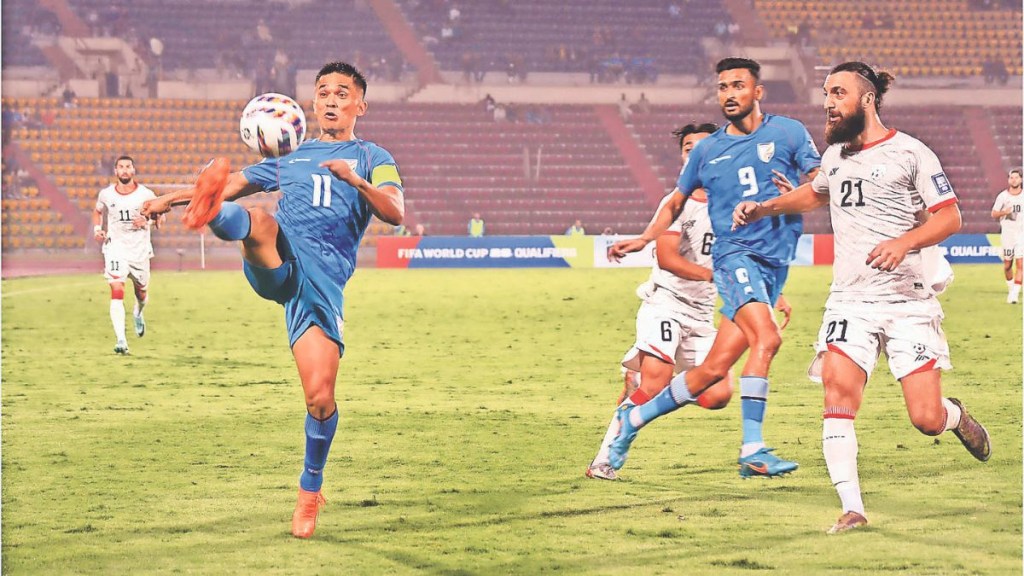Why do brands vie for a slot on sports-based programming? One, they reach a highly engaged audience, and two, if they strike the right chords, they end up forging emotional bonds with prospective consumers.
Little wonder, sports marketing is getting bigger every day. As per a GroupM report, the industry recorded a total revenue of `15,766 crore in 2023, an 11% growth over the previous year. In 2008, that figure was only `2,400 crore, indicating that the CAGR for sports marketing has been an impressive 13.3%.
No, don’t pop the bubbly if “willow” means just another tree for you. Because sports marketing in India equals splurging on cricket. Sports like football, kabaddi and hockey account for a dismal 13% share at around `2,065 crore in 2023. That percentage has stayed more or less the same over the last few years despite the fact that properties like the Pro Kabaddi League (PKL) and Indian Super League (ISL) have been around for almost a decade.
So why isn’t the advertiser pumping in the moolah in other sports?
The first reason is their lukewarm following. Sports like kabaddi and football simply haven’t been able to hold a candle to cricket viewership. Advertisers follow the numbers, and cricket is not called India’s religion without reason. An Ormax study released this year estimates that the cricket fan base in India is at a whopping 612 million, followed by football at 305 million and kabaddi at 208 million. Yasin Hamidani, director, Media Care Brand Solutions, says limited infrastructure and investment, the lack of media coverage and lower fan engagement are significant hurdles for sports like kabaddi and football. “These sports need to improve grassroots participation, invest in modern facilities and marketing efforts to attract sponsors and advertisers. Addressing these challenges requires a concerted effort from stakeholders,” says Hamidani.
But it’s not all gloom and doom, with properties like PKL, ISL and Prime Volleyball League (PVL) offering a ray of hope. Joshey John, director and sales head at ITW Global, observes that the kabbadi and volleyball leagues have tweaked their formats to drive up viewership, making them broadcast-friendly . For example, the PVL has reduced the usual 25-point game to a 15 pointer to make the games shorter.
Captain’s call
John says that other sports can take a leaf out of the PKL playbook, which has by far been the most successful non-cricketing property. With state-of-the-art production quality, a viewer-friendly format of the sport and exciting shoulder programming content, it has shaken up the franchise league space in India. “From what we have seen in cricket, the potential for sport consumption growth is huge. What is needed is innovation and constant evolution to keep up with changing viewer attention spans and engagement trends,” says John. Fantasy-based apps have also added a new dimension to cricket as well as kabaddi.
Leagues such as PVL and Ultimate Kho-Kho have resorted to a one-venue format for their initial seasons to minimise operational and logistics costs, which is a good starting point for upcoming sports. John says that to reach peak popularity, it is important to give audiences the experience of live sports and multi-venue formats are important in the long run. Advertisers in particular will have to play an important part in driving growth for sports such as kabaddi, football and hockey. Santosh N, managing partner at D&P Advisory, says sponsorships and collaborations can enhance the profile of both the sport and the brand.
Experts say that a league like PKL, in fact, offers better returns to advertisers from a cost per contact perspective. Divyanshu Singh, COO of JSW Sports, points out, “The league reached an audience of 250 million last season with phenomenal penetration in tier-II and III, which is a core target market for a lot of emerging sectors. ISL has expanded its footprint across 11 cities providing a pan-India marketing platform for brands. Indian football fans are more aware, invested and involved than ever before, and this audience will only grow,” says Singh.
Ultimately it boils down to passion, awareness and experience. “Every stakeholder — be it advertisers or government bodies — needs to nurture these if we are to see significant change,” sums up KV Sridhar, global chief creative officer, Hypercollective and Nihilent.

